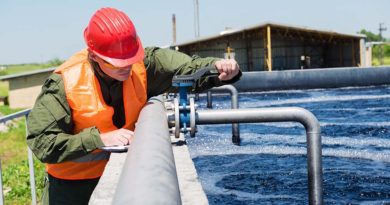IPC thermal performance testing with Emerson
Industrial PCs are often used in harsh environments, whether in process industries or in outdoor environments exposed to direct sunlight. In these settings, thermal performance is key to ensuring reliable IPC operation. But how accurately do IPC thermal tests reflect real-world performance? Emerson’s Gene Juknevicius explores.
Testing industrial PCs for high temperature applications
Emerson has extensive experience in developing IPCs for extreme environments, so the company is familiar with the operating conditions of demanding industrial settings.
This is reflected in Emerson’s testing processes, which are designed to closely simulate real-world environments to ensure IPC performance is reliable and consistent.
- Summary:
Thermal chamber tests with forced airflow do not simulate realistic operating conditions
Modern CPUs throttle performance at high temperatures, subtly affecting IPC performance
Transcript:
Hi, my name is Gene Juknevicius and I am a solution architect at Emerson. Sometimes, our customers are limited in where they can install their cabinets. Oftentimes, these cabinets are outside, they have no active air flow for cooling, or they’re exposed in the direct sunlight which pre heats them up to 65 and 70 degrees Celsius.
Emerson designs their industrial PCs and displays to operate in hot temperatures so that you can install them anywhere you need and don’t need to worry about their performance; focus on your application.
Let’s see how well our industrial PCs and displays operate in a hot temperature. Here we have a typical thermal chamber and here you can see a large fan which is used to circulate air inside the chamber. If we were to put our units inside such a chamber and perform a test, we would be testing under significant forced air flow condition. Easy to pass the test and many other suppliers do just that, but this is not what the conditions inside the cabinet are.
To simulate realistic conditions inside the cabinet, we need to block the air flow inside the chamber. For that, we first place another box here and then we put our our RXi2-BP Industrial PC and our RXi display inside that box.
Now that there is absolutely no forced air flow around our units, we can perform a thermal test that reflects the realistic usage conditions inside your cabinets. We lower the CPU to 100% by using burn-in test software, set ambient air temperature to 65 degrees and see what happens.
Another important point is that modern CPUs thermally protect themselves. When they get too hot, they slow down in a process called throttling. All these effects and frequency changes happen under the hood and as a user you don’t really notice them until your application becomes sluggish, unresponsive, and perhaps you’re starting to miss your real time performance expectations.
Many suppliers specify their processors in the operating temperature range in such a way that at the upper range of the operating temperature, the CPU is already throttling down. This is not what you want. What you really want is that Industrial PC, in a field, operates and gives you the same performance as it did in the lab.
Now back to our test results. As you can see the chamber, the air around the units, is at 65 degrees Celsius. The CPU is 100% utilised. The nominal frequency is 1.5 GHz, and actual frequency is jumping close to 2 GHz and above. That’s exactly what you want. Now let’s try to raise the bar. Let’s set the temperature to 70 degrees. Here I must note that the RXi display’s actually specified only up to 65 degrees C, so we going to violate the specification. But let’s see what happens.
Now you can see that ambient air temperature around the units is 70 degrees C. The processor remains 100% utilised. The nominal frequency remains 1.5 GHz and actual frequency is jumping up to 2 GHz. You get the full performance at 70 degrees Celsius with no active air flow, that’s exactly what you want. Mission accomplished.
In summary, Emerson Industrial PCs and displays are designed to operate in a wide temperature range. No matter how hot or cold, they will deliver the full performance so that you can focus on your application.



